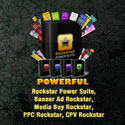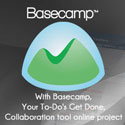How to Create An Information Product That Sells
Posted on November 10, 2011 by CJ Article Team

At some point, you’ll want to provide a self-created information product on your blog. It might be a free product you use as a subscriber opt-in enticement, or you may be ready to create a product you sell. Eventually, you will want both types of products available on your blog. Is it imperative to have your own self-created information product to make money online?
Not at all. You can certainly sell other people’s products and make a good income. However, you can bring in a lot more money and have control over the creation and promotion of a product if you create it yourself.
You Own Product or Affiliate Products?
When you sell affiliate products, you earn only a percentage of income you generate. The product creator earns the remainder (usually a 50/50 commission split).
But if you sell your own products, you make 100% of any sales on your blog, as well as a percentage what your affiliates sell. There are lots of options with product creation — you can sell your own information product, your affiliates can also sell it for you, and you can add to that income by selling affiliate products. Creating your own eBooks, courses, guides, etc., gives you the option for multiple streams of income that can eventually become streams of passive income (meaning you don’t have to do anything except promote the product now and then).
Many new bloggers believe they lack the knowledge or ability to develop a product from scratch. That couldn’t be further from the truth. You have many skills that others don’t have — and you can share those skills and your knowledge about them with others who are eager for the information. It can be anything from parenting tips to building a birdhouse! It’s just a matter of finding out what your readers want, then learning how to create and design the information product, and present it to your customers in an appealing way.
You also need to carve out the time during your week to work on the product. Let’s look at the initial steps for planning and producing an information product to sell on your blog.
Step I: Deciding What to Create
The hardest part of creating a product is determining what to create. When trying to decide, keep these two things in mind:
Be passionate about your subject matter. This will make creating the information product so much easier and the final result even better.
With your information product, be sure to offer a solution to a problem, teach something readers want to know, or show them how to do something that will improve their lives.
Now consider your blog niche and topic categories. Begin brainstorming some possible product topics you think might interest your readers and that would work well as a product. Make notes about these ideas. If you can’t come up with something on your own, begin research other blogs in your niche and look at the information products they sell.
Begin to notice other information products on the net. And even though a product may be out there doesn’t mean you can’t create something similar. The Internet is teaming with people looking for valuable information.
Step 2: Get the Reader Involved
If you really want to know what kind of product your readers will find useful, ask them! Many bloggers overlook this step because they just want to get on with the process of creating the information product. They get inpatient. However, your readers’ feedback and opinions are vital to the success of your information product.
Here’s why:
1. They become invested in the information product since they participated in creating it.
2. By involving your readers, you can create exactly what they want without just guessing or hoping they’ll like it.
When you engage your readers in every step, from the topic, to the format (ebook, course, etc.), to the medium (written, video, audio, combination), to the content, you further commit your readers and foster their enthusiasm and interest.
Here are some tips on how to engage your readers:
Start a conversation with them. Hopefully you have an email service so that you can send out a broadcast email. With a smaller subscriber list, you can offer a “survey” within the email, to ask questions about the information product.
- Advise your readers in the email about your product, and invite their input and ideas. They can select from ideas you present to them, and you can ask open-ended questions about possible topic ideas you may not have mentioned.
- Find out the type of information product they prefer — a course, ebook, workbook, etc. and the medium they like – written, audio, video, or a combination.
- Ask just a few questions so you don’t overwhelm them. If you need to find out more, survey them again as you work on the project, as you outline the content and need other answers from them.
- If you have thousands of subscribers, consider using survey software to help you collect your responses like Survey Monkey or Survey Gizmo.
Step 3: Research Your Topic
When you have a good idea about the product topic, conduct some research to make sure you:
- optimize SEO (search engine optimization) so your information product will be found on Google and other search engines;
- learn more about the competition and their products, noticing what you like or don’t like about them, and how they rank in SEO;
- create a unique point of difference for your information product so it will be more interesting, useful, and valuable than other similar products.
You can use a free service called Google Keywords to help you look at product keywords and phrases. This will help you learn about the competition, determine the best name for your product, and discover how many people are searching for this topic or related topics.
Be sure to use a strong keyword phrase is in the title of the information product. An interesting or creative name may seem compelling, but a straightforward keyword phrase will do more for you with helping readers find your product.
Step 4: Determine Your Creation Schedule
Be sure you proactively schedule time in week to work on your information product. Set a deadline, even a launch date, and announce it to readers to create a sense of urgency for yourself. Start working backward from your deadline, plotting on a calendar exactly how many hours per week you will spend working on the product. Outline the product content before you start writing.
Refine the outline, and then show it to your readers to get input. Once you have the outline, begin writing and developing the content of the information product. If you’d rather not write the content yourself, you can pay a freelancer to write it for you. You will make up the expense of this service when you begin selling the product.
Check out Elance to find hundreds of freelance writers. However, if you create video or podcasts, do these yourself, as your readers prefer to see your face and/or hear your voice. Remember, the work of launching an information product takes nearly as much time as creating it – between the design and packaging of the product, developing a sales page and marketing plan, finding affiliates, and promoting the product launch.
So consider setting two deadlines, one for completing the content and one for packaging and promoting the final product.
Step 5: Ask for Feedback
When the information product is completed, ask for input from a few readers and even other bloggers before you design and package it. Offer the rough draft to 5-10 readers at a discounted price in return for their feedback and testimonials – and with a promise to give them the final version once it’s completed. You can also ask a few bloggers to review the rough draft with a promise that they can be an affiliate at a slightly higher commission rate.
Ask them for testimonials as well to use for promoting the product. Once you have all of this feedback, make any necessary changes or corrections. At this point, you have should have a product that your readers can’t resist.
Creating a winning product isn’t rocket science – but it does require thorough planning and preparation. When you provide solutions for people, engage them in the creation process, conduct important research, and plan out your schedule, you will enjoy the fruits of your labor in the form of some cool cash!
Barrie Davenport writes about Good Karma blog marketing at A-List Blog Marketing where you can receive a free video course, The Heart of Successful Online Marketing.
Article Source: http://EzineArticles.com/?expert=Barrie_Davenport
Facebook Comments:


































